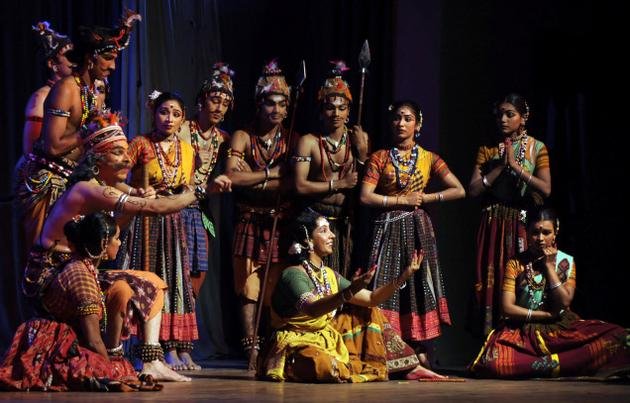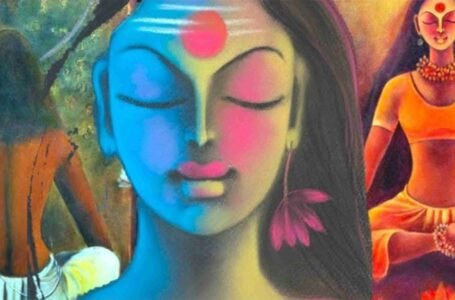The Elegance of Kuravanji: Tamil Nadu’s Forgotten Lyrical Poetry

Kuravanji – a classical form of tamil lyrical poetry is one of the most distinctive elements of the cultural geography of Tamil Nadu. In the word Kuravanji, the first meaning, translated as “The Gypsy’s Tale,” describes gypsy women’s lives, travels, and associations with nature and civilisation. Also admired for its art and religious significance, Kuravanji had its genesis in temple entertainments and firmly cemented in the social religious cultural calendars of Tamil Nadu. It is today almost extinct and therefore needs advocacy that seeks to explain and possibly reclaim their social value.
What is Kuravanji?
Kuravanji is a kind of Tamil song and drama based on the love of an ill-starred gypsy woman called Kurathi. It usually involves the heroine ‘‘meeting ‘‘ a Kurathi who informs her of her future , mostly focusing on love and union. Sanskrit, used in Kuravanji pieces, is highly poetic and musical with strong underpinnnings of mythology and emacroate spiritualism intermingled with simple realism of the everyday life.
The art-form of Kuravanji was a type of Tamil literature and performance for the Nayak period of the sixteenth to eighteenth centuries. This literary tradition did not only serve as entertainment, although its effect was certainly felt in this regard, but as a channel for religious or moral ideas, for philosophical thought, which, during temple feasts or other ceremonies, were read aloud in temple locales.
How is Kuravanji Celebrated?
Kuravanji was essentially associated with the Annual Temple Car Festivals of Tamil Nadu. Most of them were performed when either the goddess was carried around the town or in occasions that required elaborate ceremonies. These plays were performed together with musical and dancing performances which so complimented he arts. The gypsy women characters, or Kurathis, were the focus of the show and most of them engaged in predictions or storytelling that echoed of devotion to the divine.
Connection with Temple Practices
It will therefore not be out of place to note that Kuravanji was closely associated with temple art of Tamil Nadu. These performances were taken up in many temples as an annual performance programme aimed at entertaining as well as elevating the souls of the people. That Kuravanji is associated with the temples is because the topic of the play revolves around devotion and human gods relationships.
Temples and Ritual Performances with Special Reference to Kuravanji
The rituals surrounding Kuravanji often included the following elements:
- Procession of Deities: During festive occasion, the deities were adorned and taken out on royal like, rath carrying them whereas Kuravanji performances were conducted as prayers.
- Natya Arangetram (Dance Performances): The settings that involveders included dance dramas founded on Kuravanji poetry provided a divine beauty to temple festivities.
- Astrological Predictions: Gypsies were depicted as puppets who sometimes mimed a prophecy to a heroine or someone else, referring to people’s submission to divine providence.
- Symbolism of Union: The plot of most Kuravanji was the espousals of the heroine to her lover, which was analagous to the soul’s marriage to the body.
The Inventors of Kuravanji
To varying extents, Kuravanji as a literary and performance art form can considered to be a product of Tamil poets and dramatists of the Nayak era. It was enriched by contributions of poet laureates Sivaramakrishna Bharati and Arunachala Kavi. The most famous one is the ‘Kutrala Kuravanji’, of which the author is unconfirmed but stated to be that of Thirikooda Rasappa Kavirayar and concerned with the deity of the Kutralam temple.
Pros and Cons of Kuravanji
Although Kuravanji offered unparallel, rich and profound cultural and spiritual significance to Tamil Nadu, it was not without merits and demerits and controversies.
Pros:
- Cultural Preservation: Kuravanji also collected and maintained local Tamil poetries and fairy tales.
- Spiritual Elevation: Most of it conveyed themes of dedication and ethics other moral concepts all in its artistry.
- Community Engagement: The performances were way of the people coming together and entertaining themselves.
Cons:
- Marginalization of Gypsy Women: However, gypsy women were depicted in romantic or stereotypes ways ignoring all those issues that they face in their lives.
- Decline Over Time: This art however, like every other aspect started experiencing a shift in the market and people and therefore faded away.
- Cultural Appropriation: Sometimes elements of gypsy life were borrowed to create images without real gypsy presence.
Connections of Interest with Tradition
Kuravanji themes are post-Indian Tamil traditions which tell about the need to harmonize with nature and respect life. Both gypsy male and female characters depict the women as mysterious, sensitive and towers of IQ while the men are sensitive, and cosmopolitan. The practice of palmistry, astrology and what they refer to as ‘ko’ – a form of fortunetelling employed in performing Kuravanji is testimony to the original Tamil tradition.
Gypsy Women: Central Figures in Kuravanji
Kuravanji revolves around gypsy women also called Kurathis, as mentioned in the initial introduction of the play. They are fascinating mystical and wise women who possess feminine essence. But as we all know, their portrayal has always been a controversy.
- Importance Given to Gypsy Women: Now, Kuravanji glorify their intelligence and relations with nature, however, ignoring the hardships that concrete gypsy communities had to face.
- Impact on Gypsy Women: Such portrayal of gypsies in Kuravanji brought some change in perception by society which ultimately led to marginalization of gypsies. Who Are Gypsy Women?
Gypsy women are looking for a marriage partner, they are also called Kurathi in Tamil culture are nomadic women who are involved in their distinctive tradition of foretelling, singing or dancing. Their lifestyle is mobile and flexible, and they have a profound concern with the physical environment. On the one hand, Kuravanji emphasizes the cultural value of the people calling the show, on the other hand – the problems that these people face because of the discrimination and segregation in society.
Decline of Kuravanji
Over the years, Kuravanji has faced a gradual decline due to:
- Modernization: New generation entertainment sources have tried to overshadow traditional entertainment forms such as Kuravanji.
- Lack of Documentation: Due to creativity, oral and performative in nature Kuravanji has not been preserved properly in terms of documentation.
- Neglect of Cultural Heritage: Artists of the older generations perform lesser traditions to their younger audiences who were trained to dismiss arts.
Reviving Kuravanji
Efforts are being made to revive Kuravanji through:
- Cultural Festivals: Performing Kuravanji in areas where there are cultural festivals.
- Academic Research: Promoting studies which would compile a history and elaborate on various aspects of Kuravanji performance.
- Digital Media: Applying technology to share performance and interact with a large number of people.
Conclusion
It therefore may truly be said that Kuravanji is not only lyrical poetry: it depicts the cultural and spiritual face of Tamil Nadu. They claim that Indian cinema due to its relationship with temple rituals, due to the celebration of gypsy women, and due to the poetical view of the film is an invaluable heritage. Despite this the art of hunting can easily suffer defeat in the modern world and therefore group effort is vital to make sure this form of art is preserved for future generations to learn from. By supporting and encouraging the practice of investment in and to Kuravanji, Tamil Nadu should not lose sight of the core spirit and intellect of the gypsy women who are the heart of the art.


